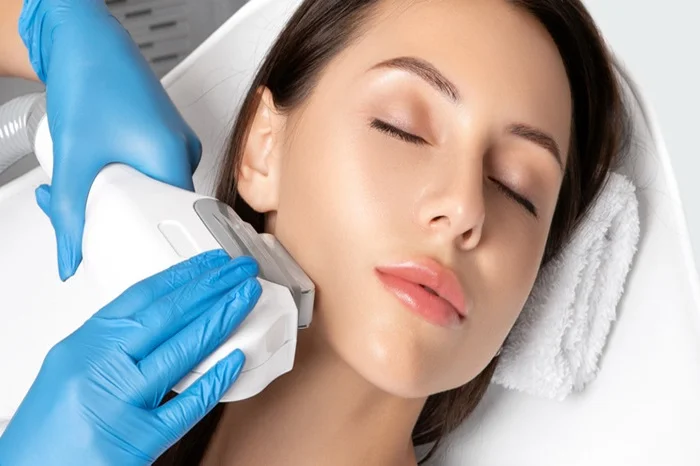Intense Pulsed Light (IPL) hair removal has gained popularity as a non-invasive method for reducing unwanted hair. Many individuals seek out this treatment for its promise of long-lasting results without the need for traditional methods such as shaving, waxing, or plucking. However, concerns about safety and potential side effects often arise. This article will explore whether IPL hair removal is safe, examining its mechanism, benefits, risks, and what individuals should consider before undergoing treatment.
What is IPL Hair Removal?
Definition and Mechanism
IPL hair removal utilizes a broad spectrum of light wavelengths to target the melanin in hair follicles. The light energy is absorbed by the pigment, generating heat that damages the follicle and inhibits future hair growth. Unlike laser hair removal, which uses a single wavelength, IPL employs multiple wavelengths, making it versatile for various skin types and hair colors.
Benefits of IPL Hair Removal
Long-lasting Results: Many users experience a significant reduction in hair growth after multiple sessions.
Non-invasive: IPL is a non-surgical procedure that typically requires no downtime.
Versatility: It can be used on various body areas including legs, arms, underarms, and facial areas.
Cost-effective: Over time, IPL can be more economical compared to continuous waxing or shaving.
Safety of IPL Hair Removal
General Safety Profile
Overall, IPL hair removal is considered safe when performed by qualified professionals or with FDA-approved devices for home use. Most side effects are mild and temporary. Common reactions include redness, swelling, and irritation in the treated area. These typically resolve within hours to days following the procedure.
Potential Side Effects
While many individuals tolerate IPL well, some may experience side effects:
Redness and Swelling: These are the most common reactions and usually subside quickly.
Hyperpigmentation: Dark patches may appear in treated areas due to increased melanin production stimulated by heat. This condition generally resolves within weeks.
Burns: Although rare, improper technique or equipment settings can lead to burns on the skin.
Erythema: Transient redness may occur immediately after treatment; this is a normal response to the light energy.
Oedema: Mild swelling around hair follicles can happen but typically resolves quickly.
Paradoxical Hair Growth: In some cases, new hair growth may occur in untreated areas adjacent to the treatment site.
Long-term Risks
Most side effects are transient; however, there are potential long-term risks associated with IPL:
Skin Dyschromia: Changes in skin pigmentation may occur but are often reversible after several months.
Scarring: Permanent scarring is rare but possible if burns occur during treatment.
Neuropathic Pain: Some individuals have reported chronic pain following treatment, although this is extremely rare.
Factors Influencing Safety
Skin Type and Color
IPL is most effective on individuals with light skin and dark hair due to the contrast between skin tone and hair pigment. Those with darker skin tones may be at a higher risk for adverse effects like hyperpigmentation because the device may not differentiate between melanin in the skin and that in the hair follicle.
Pre-existing Skin Conditions
Individuals with certain skin conditions such as eczema, psoriasis, or active infections should consult with a dermatologist before undergoing IPL treatment. Additionally, those with photosensitive skin or who are currently sunburned should avoid IPL until their skin has healed.
Device Quality
The safety of IPL treatments also depends on the quality of the device used. Devices that are FDA-approved or certified by relevant health authorities ensure adherence to safety standards. Home devices should come with clear instructions and safety features like skin tone sensors to prevent misuse.
Preparing for IPL Hair Removal
Consultation
Before undergoing treatment, it is essential to have a consultation with a qualified practitioner who can assess your suitability for IPL based on your skin type and medical history.
Pre-treatment Guidelines
Avoid Sun Exposure: Limit sun exposure for at least two weeks before treatment.
Shave the Treatment Area: Shaving helps ensure that the light energy targets the hair follicle effectively.
Avoid Certain Products: Refrain from using products that irritate the skin (e.g., retinoids) for several days prior to treatment.
What to Expect During Treatment
Procedure Overview
During an IPL session:
- The practitioner will apply a cooling gel to protect your skin.
- Protective eyewear will be provided to shield your eyes from the bright light.
- The device will be placed against your skin, delivering pulses of light.
Most sessions last between 20 minutes to an hour depending on the area being treated.
Pain Management
Many patients report feeling only mild discomfort during treatment, often described as similar to a rubber band snapping against the skin. Cooling gels or devices may be used to minimize discomfort during the procedure.
Post-Treatment Care
Immediate Aftercare
After an IPL session:
- Expect some redness and swelling; this is normal.
- Apply cool compresses if necessary to soothe irritation.
- Avoid sun exposure for at least two weeks post-treatment.
Long-term Care
To maintain results:
- Schedule follow-up sessions as recommended by your practitioner.
- Continue avoiding sun exposure and use sunscreen on treated areas.
- Monitor your skin for any unusual changes or prolonged side effects.
Conclusion
In summary, IPL hair removal is generally safe when performed correctly by trained professionals or using high-quality home devices. While there are potential side effects—most of which are mild and temporary—the benefits often outweigh these risks for many individuals seeking effective hair removal solutions.
Before proceeding with IPL treatments, it is crucial to understand your own skin type and any pre-existing conditions that might affect your experience. Consulting with a qualified practitioner can help ensure that you make an informed decision about whether IPL is right for you.
By following pre-treatment guidelines and adhering to post-care instructions, individuals can maximize their safety and satisfaction with this popular cosmetic procedure.
Related topic:
Is IPL Laser Painful: Everything You Need To Know
How Painful Is Liposuction Without Anesthesia?


